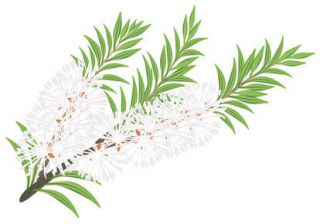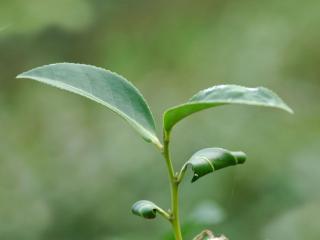

The tea tree is a small tree with the scientific name of “Maleleuca alternifolia”. A plant belonging to the Myrtaceae family, the tea tree is native to Australia (North). It can also be found in warmer parts of North America. Its delicate and dense foliage make it a great subject for growing as a bonsai in China, and the plant is very ornamental.
In the wild, the plant grows in marshes, swamps, along bodies of water, on clay and sandy soil that gets abundant rain. It’s also cultivated in many countries across the planet, like Zimbabwe and New Zealand.
It has long been used as a disinfectant and an antiseptic to care for skin. The years following World War II is when its use for therapeutic purposes really took off. Thanks to its therapeutic properties, it is effective in treating many cutaneous infections.
What are the therapeutic benefits of tea tree? What are the benefits for health? How can these medicinal properties be maximized? Are there any contraindications? Let’s have a look around…
There are a number of different tea tree varieties. Over 150 tree and shrub species are classified as tea trees. Cajeput (Melaleuca cajeputii) and Niaouli (Melaleuca quincuenervia) are two examples.
It’s often thought to be the actual “tea” plant, from which tea leaves (think English expertise on the topic) are harvested, but it’s not. It’s actually much closer genetically to common myrtle. What is special about this plant is the care it requires.
Indeed, ensuring that it stays cool with lots of moisture, especially during the night, is essential. Place it in a luminous room, but without any contact with the rays of the sun. This will ensure it stays in full vegetative activity.

Tea tree leaves, though not destined for teapots, are nonetheless extremely valuable: from them essential oil is extracted. This clear, colorless liquid smells both fresh and woody.
Tea tree is used in a wide array of cosmetics (ointments, creams, soaps, shampoo…) and also in organic food. It’s actually grown on an industrial scale now.
Thanks to its main biochemical compounds (gamma-terpinene and terpinene-4-ol), the tea tree is prescribed to treat skin lesions, especially foot mycosis, dermatitis, ringworm and psoriasis. A very effective antibacterial, anti-fungus and major anti-infectious, it has also been proven to succeed curing acne, furunculosis, warts, dandruff and even lice.

Its essential oil is a venous and lymphatic decongestant, an anti-inflammatory, antiparasitic and antiviral agent. Its benefits have been demonstrated in helping stave off temporary tiredness and is successful against mites and ticks.
Experts have also discovered therapeutic benefits in treating vaginal infections.
To cure cutaneous infections (foot mycosis, athlete’s foot, infections under the nails…), experts recommend mixing 2 drops tea tree oil and 1 drop lavender oil into 1 teaspoon olive oil. Apply on the infected areas with a wad of cotton several times a day.
To avoid any possible allergic reactions, it is mandatory to dilute the tea tree oil. Never use it directly in its concentrated form. Avoid sensitive spots of the body (eyes, nose, mouth and genitals) and never ingest it. In those cases, consult a doctor.